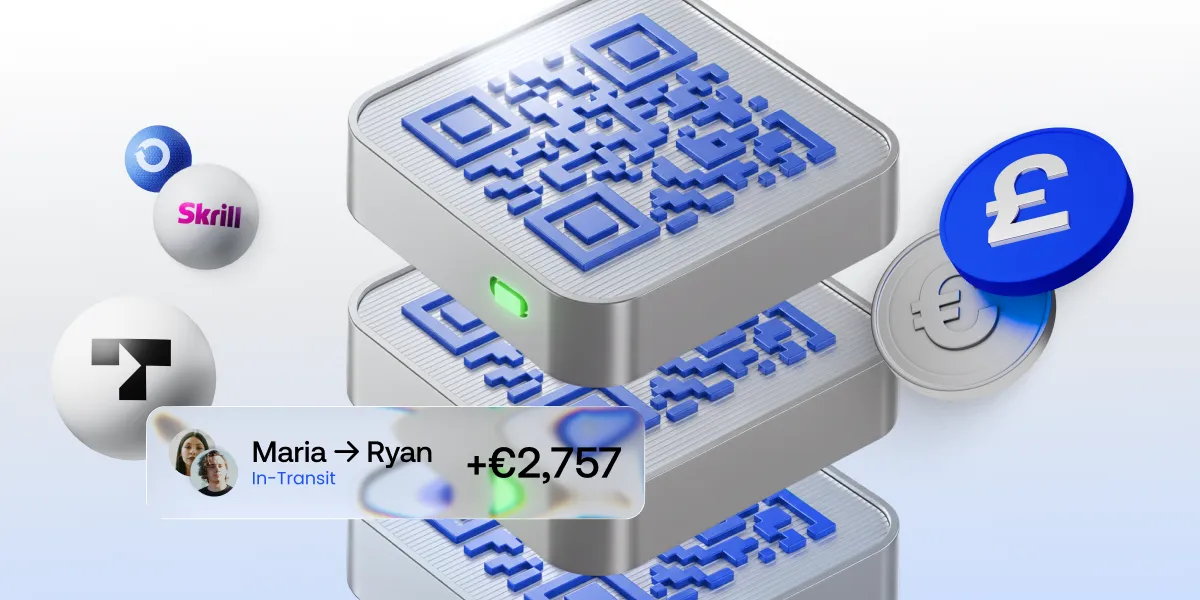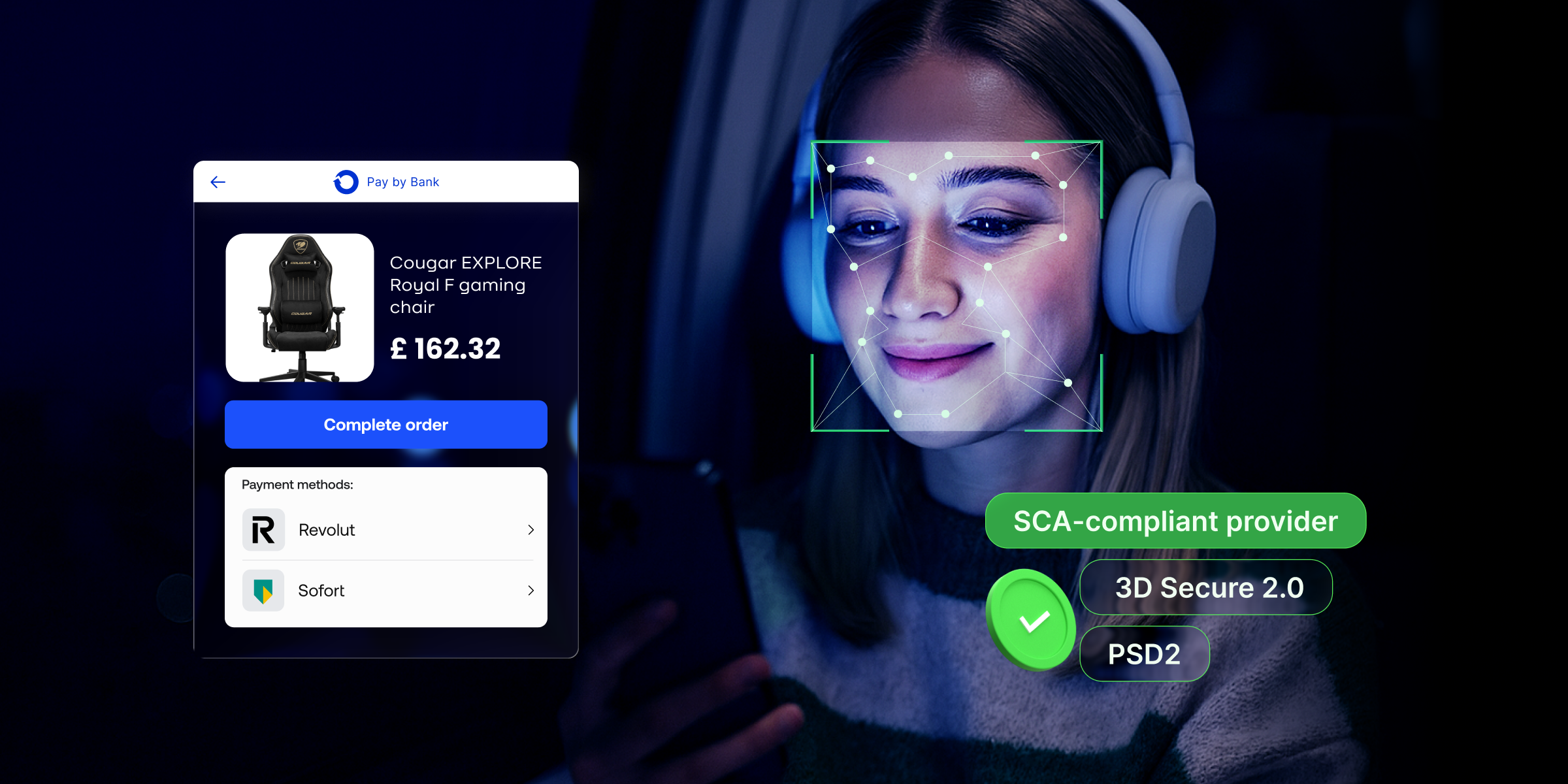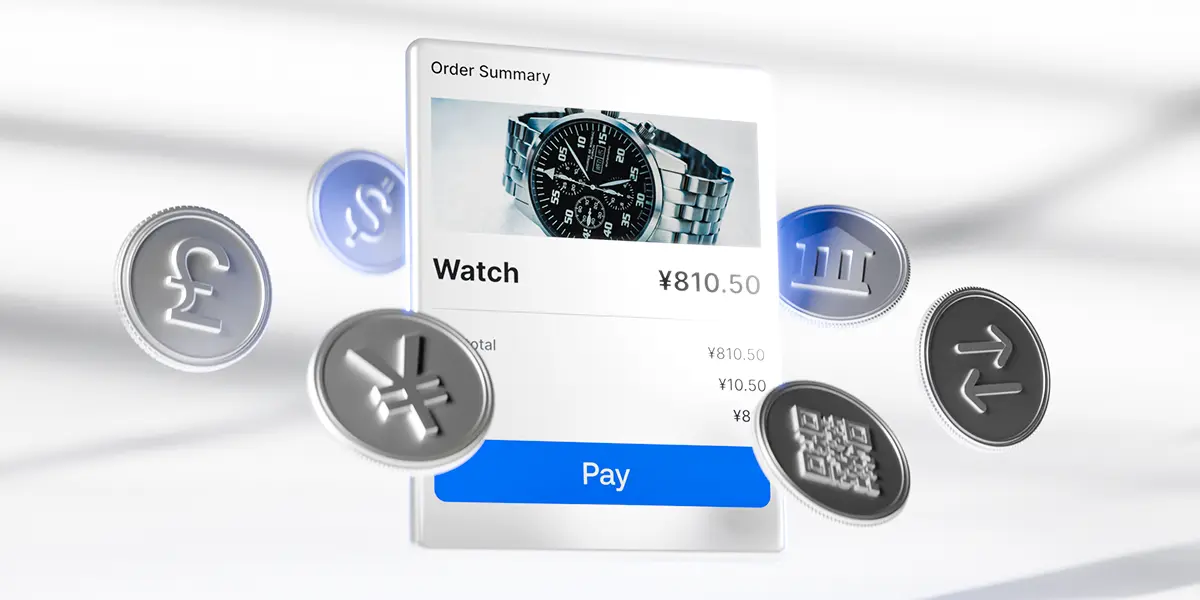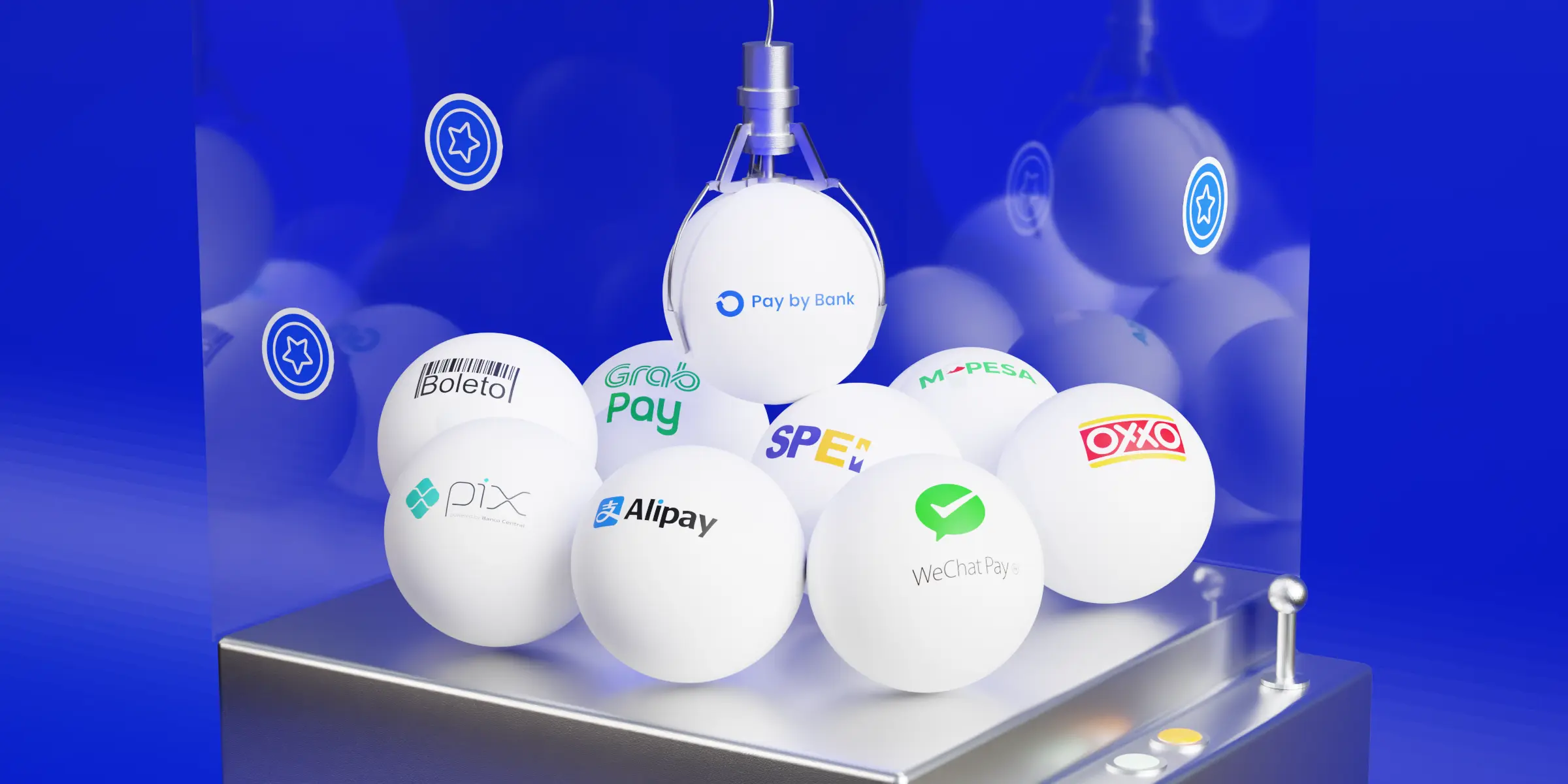The rise of QR code payments worldwide
Payment preferences in Southeast Asia: From cash to digital wallets
How to adapt your payment strategy for entering new markets
The future of payments: How AI is transforming the industry
The rise of QR code payments worldwide
QR codes have become one of the fastest-growing payment technologies, not only in physical stores but also online. For e-commerce merchants, they offer a simple and cost-effective way to reach customers who prefer paying directly from their bank accounts or digital wallets.
In markets where card penetration remains low, QR payments bridge the gap between online and offline. They let shoppers pay in real time, even without a card, while merchants enjoy faster settlements and fewer failed transactions. Understanding how this payment method works and where it’s gaining ground can help your business offer a more accessible and localised checkout experience.
What QR code payments are and how they work
When used online, QR payments act as a bridge between web checkout and mobile banking apps. After selecting Pay by QR at checkout, the customer is shown a unique QR code on the screen. They scan it using their mobile banking or wallet app, where all payment details, such as amount, merchant name, and order ID, appear automatically. After the authorisation, the payment is processed instantly, and the merchant receives real-time confirmation.
In this setup, QR payments can be:
- Dynamic – a new QR code is generated for every order, containing the exact amount and transaction details.
- Static – a general code that directs the payer to a fixed account or payment page. This option is less common for e-commerce, as it requires manual entry and offers no automation.
Dynamic QR codes are now the standard for online payments because they ensure accuracy, automate reconciliation, and eliminate the need for manual confirmation.
Why QR payments are gaining popularity in e-commerce
The growth of QR payments in online business is driven by their ability to combine convenience, speed, and financial inclusivity. For merchants, they are an alternative to cards and wallets that’s cheaper to process and less prone to chargebacks. For customers, they’re a natural extension of the mobile banking experience.
Some of the key reasons QR payments are thriving online include:
- Instant, secure transfers: Customers authorise payments within their trusted banking or wallet app.
- Low processing costs: Transactions run through local bank rails, bypassing card networks and reducing fees.
- High conversion rates: No need to enter card numbers or switch between multiple checkout pages.
- Fewer declines: Real-time bank authorisation means fewer failed payments compared to cards.
- Wider accessibility: Ideal for shoppers who don’t own credit or debit cards, especially in emerging markets.
Adoption of QR code payments around the world
QR codes originated in Asia’s retail sector, but their digital version has quickly found its way into online commerce. Let’s see how different regions adopt this technology.
QR code payments in Asia
Asia remains the largest and most advanced market for QR payments, both offline and online. China was the pioneer: Alipay and WeChat Pay introduced QR-based transfers over a decade ago, making them the default payment option for millions of consumers. Today, these same QR systems are integrated into countless e-commerce platforms, connecting merchants with over a billion wallet users.
India’s Unified Payments Interface (UPI) has made QR payments nearly universal. Consumers can pay online by scanning a dynamic UPI QR code or using a UPI link within their mobile app. Over 12 billion UPI transactions occur monthly, with online payments and mobile commerce driving a growing share.
Across Southeast Asia, countries such as Thailand (PromptPay), Indonesia (QRIS), Malaysia (DuitNow), and Singapore (PayNow) have established national QR standards. These systems now support cross-border interoperability, allowing users to pay across countries using their domestic banking apps — a major advantage for online merchants serving customers regionally. Japan’s JPQR initiative has also unified fragmented local systems, helping QR payments expand across both physical and online channels.
QR code payments in Latin America
Latin America has embraced QR codes as part of its wider instant payment revolution. Brazil’s Pix, launched by the Central Bank in 2020, has become a national success story. It allows customers to complete purchases instantly with their banking apps. Pix now accounts for more than 40% of all electronic payments in Brazil, and many e-commerce platforms rely on it to reach customers who don’t use cards.
Another example is Mexico’s CoDi, based on the SPEI instant transfer system, which also supports online QR payments through participating banks. While adoption has been slower compared to Pix, CoDi is helping to build digital payment habits among both consumers and small businesses.
Other countries, including Argentina and Colombia, are now developing similar systems inspired by Pix’s success.
QR code payments in Europe, the Middle East and Africa
In Europe, QR payments are being shaped by open banking and instant payment regulations. Online merchants in countries like the UK, Netherlands, Germany, and the Nordics offer Pay by Bank options where customers scan a QR code to initiate an authenticated transfer directly from their bank account.
In the Middle East and Africa, QR-based online payments are evolving from mobile money ecosystems. In Kenya, for example, M-Pesa supports QR codes for digital commerce, while Ghana, Nigeria, and South Africa have rolled out national QR frameworks to unify bank and fintech payment apps. The UAE and Saudi Arabia are also pushing QR adoption under central bank-led instant payment projects.
Learn how to adapt your payment strategy when entering new markets.
How to accept QR code payments
Accepting QR code payments through Payop is simple – no heavy integrations, no regional restrictions. Payop connects merchants to multiple local banking and alternative payment systems worldwide, including QR-based methods.
Here’s the step-by-step process, from integration to processing:
- Sign up and verify your data: Register at payop.com and complete a quick verification to access your merchant account.
- Enable local QR payment methods: Choose QR-enabled methods in your target markets. Payop connects you to over 200 methods in one integration.
- Integrate Payop with your website: Use ready-made plugins or API integration. Customers selecting a QR method at Payop checkout are redirected to the provider’s secure environment to scan and pay.
- Customer scans and pays: The QR code is generated by the local payment provider. The customer scans it in their banking or wallet app and confirms the transaction.
- Receive instant confirmation: Payment status updates appear in your Payop dashboard in real time for easy tracking and reconciliation.
Why accept QR payments with Payop
With Payop, you can access a global network of alternative payment methods, including QR-based methods, e-wallets, instant bank transfers and cryptopayments, through one integration.
Other benefits we offer:
- Global coverage: Process payments in 170+ countries and 100 currencies.
- Simple integration: Add new markets and methods to your checkout within one contract.
- Real support: We don’t do chatbots; you get real help from your dedicated account manager.
- High conversion: Optimised user experience at checkout to maximise the conversion at the payment stage.
- Unified dashboard: Monitor all transactions from one place and get detailed reporting for any period.
- Chargeback assistance: We don’t leave you alone with the disputes, supporting you during the investigation process.
At Payop we help businesses expand globally, reduce costs, and offer seamless local checkout experiences that drive conversions. If that’s what you are looking for, contact us at sales@payop.com.








